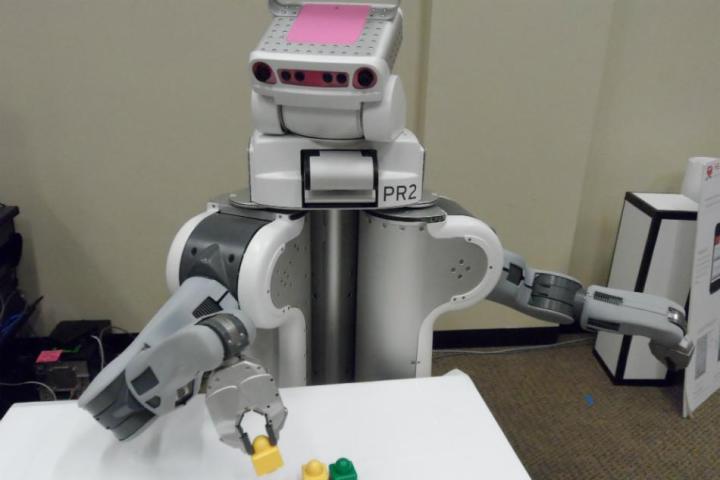
In order for robots to learn new skills faster, all they need is a little help from their Internet friends.
At the 2014 Institute of Electrical and Electronics Engineers International Conference on Robotics and Automation in Hong Kong, computer scientists from the University of Washington showed that crowdsourcing information from the online community may be a quick and effective way of teaching robots how to complete tasks, like setting a table or tending a garden.
Yes, let’s use the web to hasten their journey to self awareness.
According to the scientists, robots can learn how to perform tasks by imitating humans, but such an approach can take a lot of time. For example, showing a robot how to load a dishwasher may require many repetitious lessons to demonstrate how to hold different plates or load things in properly. With this new technique, the robot can turn to the web to get additional input on how to correctly complete the tasks.
“We’re trying to create a method for a robot to seek help from the whole world when it’s puzzled by something,” said Rajesh Rao, an associate professor of computer science and engineering at the UW. “This is a way to go beyond just one-on-one interaction between a human and a robot by also learning from other humans around the world.”
To demonstrate this theory, the researchers had study participants build models — such as cars, trees, turtles, snakes and more — out of colored Lego blocks, and then asked robots to build the same objects. But since the robots had only witnessed a few examples, they couldn’t fully complete the tasks.
So to finish their projects, they turned to the crowd, hiring people from Amazon Mechanical Turk, a crowdsourcing Internet marketplace, to generate more solutions for building the models. From more than 100 crowd-generated models to choose from, the robots picked the best ones to build based on difficulty and similarity to the original objects.
The robots then built the best models of each participant’s shape. Such a learning technique is known as “goal-based imitation,” which harnesses the robot’s ability to know what its human operator wants and then come up with the best possible way to achieve that goal.
“The end result is still a turtle, but it’s something that is manageable for the robot and similar enough to the original model, so it achieves the same goal,” said Maya Cakmak, a UW assistant professor of computer science and engineering.
So sure, the online community may be helpful for these robots, just as long as they stay away from all of the comments sections on YouTube.
Editors' Recommendations
- Meet the game-changing pitching robot that can perfectly mimic any human throw
- They strapped a paintball gun onto a Spot robot. Now the internet has the reins
- Most art galleries are closed, but you can still tour this one — with a robot
- Ballie is a rolling robot from Samsung that can help around the smart home
- Amazon bets big on its internet-from-space plan with major new facility


